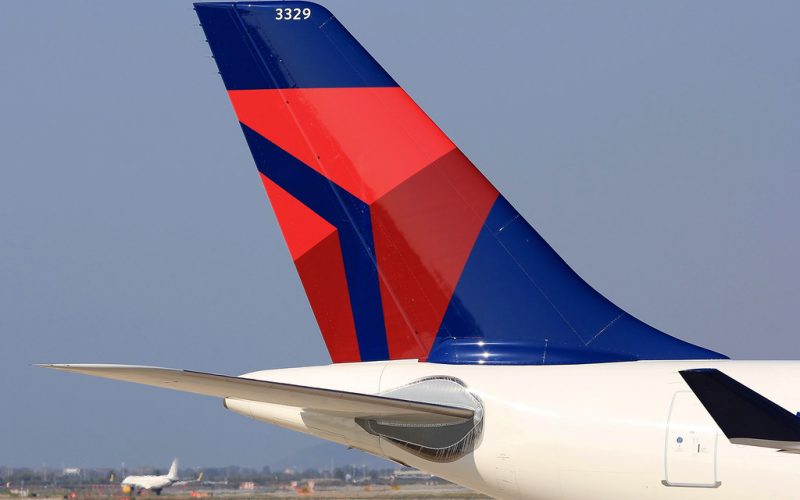Funding Challenges for Sawyer International Airport and Other Regional U.S. Airports

Airports are as unique in appearance as they are in function–they are designed to support the simplest to the most complex forms of modern aircraft.
Airports vary nearly as much as the airplanes that use them. Some of the simplest airports consist of a small grass strip runway and a relatively simple terminal while other airports are larger and more complex with multiple runways, serving larger aircraft that may be shuttling large volumes of people and cargo daily.
With the different complexities of airports comes the different needs and expectations. When we reference the smaller, more general aviation airports, the needs are simple: the primary goal is functionality.
The larger commercial airports are providing services for many different operations, ranging from the simple general aviation uses to the larger, more complex commercial air carrier operations.
As stated earlier, the different needs and expectations for the many airports are driven by the various users.
Sawyer International Airport is a unique airport. It is neither small nor large, but is a medium-size airport with many users with many needs.
Being a medium-size airport carries some difficulties when having to provide services to support the diverse customers, from the simplest of needs to the more complex.
What are the distinctive needs of the general aviation pilot flying his or her own private aircraft compared to the corporate jet aircraft flying business leaders?
What are the needs of the family of five flying out with the airlines on vacation and the airline that is providing that flight option?
Sawyer International Airport is expected to ensure everyone’s expectations of service are met. Operating on finite resources dictates the need to prioritize.
As stated earlier, the small simple airports have minimal needs, requiring minimal resources; the larger airports have many needs, but equally have many revenue sources to garner the resources.
But as a medium-sized airport, Sawyer International needs to balance the needs to the revenue while supporting a very broad spectrum of operators and services. Let us not forget other factors: Sawyer International Airport is located in the Upper Peninsula of Michigan, an area known for long winters, frequent snow events, and frigid temperatures that can drop below -20F.
Sawyer International functions on an operating budget of roughly $2.2 million and has a footprint of 2,200 acres of property with over 700 acres within the fence. This budget covers the day-to-day operations that include labor, scheduled and unscheduled repairs of buildings and equipment, snow removal in the winter and grass cutting in the summer, and airfield expenses that pertain to very specialized equipment.
Sawyer International Airport has long strove to become a self-sufficient airport, generating income from the various revenue sources.
When Marquette County made the decision to move the airport from the old Negaunee site to the current location at Sawyer, the sheer footprint of the new airport required much thought and vision.
Over the past two decades there have been some failed ventures and many successful ideas. One only needs to drive through the airport site and see several successful and growing companies.
These accomplishments provide revenue to support the operation. An interesting fact to keep in mind, in today’s dollars, the operation at Sawyer cost the local taxpayer less annually than what the former Negaunee airport cost and Sawyer provides the space and infrastructure to grow. This is a very brief look at the day-to-day operations, but an equally important part is to follow.
As a Part 139 Commercial Air Carrier Airport, Sawyer International is held to very specific guidelines and is part of a larger network described as the national transportation system.
This structure is also referred to as the National Plan of Integrated Airports System (NPIAS) that identifies existing and proposed airports that are critical to the national transportation system. The focus is to provide a comprehensive plan to ensure a productive national economy and international competitiveness.
To best use all of the national aviation resources, planning must ensure the safest, most efficient and environmentally responsible aviation system in the world that meets the needs of the traveling public.
The NPIAS falls under the regulatory arm of the Federal Aviation Administration (FAA). The FAA provides guidance to airports, helping and guiding them to remain eligible for federal funding.
The guidance focuses on several specific areas to include principles of safety, efficiency, affordability to both the users and government, flexible and expandable while remaining compatible, adaptable, versatile and integrated.
Approximately 4,940 public-use airports are included in the NPIAS. This system also provides a framework for airports to follow when requesting funding of specific development projects.
The FAA, following legislation, may provide funding to assist an airport in completing the identified projects. The primary funding source for the FAA is the Airport Improvement Program (AIP). AIP provides grants to airports to fund qualified projects. AIP funding splits into two categories and types of funding according to AIP legislation: apportioned funds, known as entitlement funding, and discretionary funding.
Entitlement grants are distributed to eligible airports at different levels determined by the passenger traffic that travels through the airport.
Airports having passenger counts of 10,000 or more enplanements per year qualify for an annual grant of $1 million in funding for approved projects; airports with less than 10,000 passengers are eligible for an annual grant of $150,000 that could also be used on approved projects. These funds are provided at a 90% federal, 5% state and 5% local split.
Discretionary funding is another part of the AIP program, but these funds are what remains after the entitlement funds are distributed. These funds are divided among various projects relating to noise mitigation, environmental, Military Airports Program (MAP), and other approved projects.
Sawyer International Airport routinely qualifies for the annual $1 million under the entitlement segment of the AIP, and has been successful at getting funds through both MAP and Discretionary programs for projects that required the additional funds.
The recent runway rehabilitation project was able to leverage over $3 million in discretionary funding, and the current hangar expansion project for Envoy’s maintenance, repair, and overhaul (MRO) operation will have over $13 million in MAP funding.
When requesting any funding from the AIP, an airport will provide the FAA a Capital Improvement Plan (CIP) that will look to the future as far out as ten years. The CIP will list the projects that the airport is requesting money for and include the estimated cost and justification.
The FAA reviews the plan and compares the airport’s priorities against their official ranking system that identifies 32 specific items by importance, starting with runways as number one.
Every project will go through a vetting process to ensure it remains in the national goals and ranking for importance. Sawyer routinely has projects that exceed the $1 million entitlement, and in many cases the project will need to be held off until additional funding becomes available or the entitlements are banked up over multiple years to cover the expense.
Sawyer’s projects planned over the coming years include a terminal reconfiguration that will update the current terminal, and increase space in the sterile area of the terminal to allow for more passenger seating after the Transportation Security Administration (TSA) check point.
Sawyer is also looking to rehabilitate taxiways and aircraft parking ramps–some of these pavements date back to the early days of the Air Force. Just these three projects may exceed $19 million.
This is just a snapshot of the challenges Marquette County and Sawyer International face moving forward.
To date, our success rate has been very good. Marquette County has been awarded additional monies for many projects. Behind the curtain, staff work hard to make sure your vacation or business flights have the needed facilities and support to remain successful.
If you are a general aviation pilot, the challenges to keep a safe airport for your flights are met head on, or if you are just a citizen of Marquette County and never use the airport directly, we will continue to strive to make this airport self-sufficient and be there for you if you ever need us.





